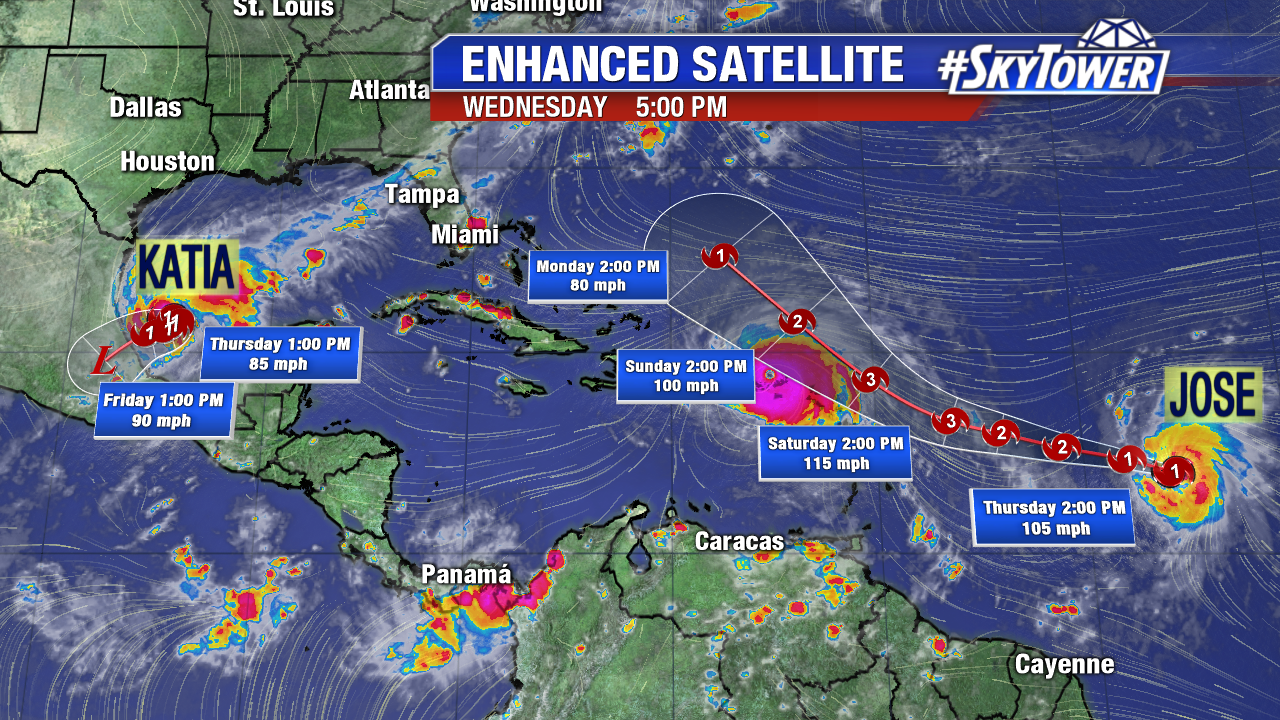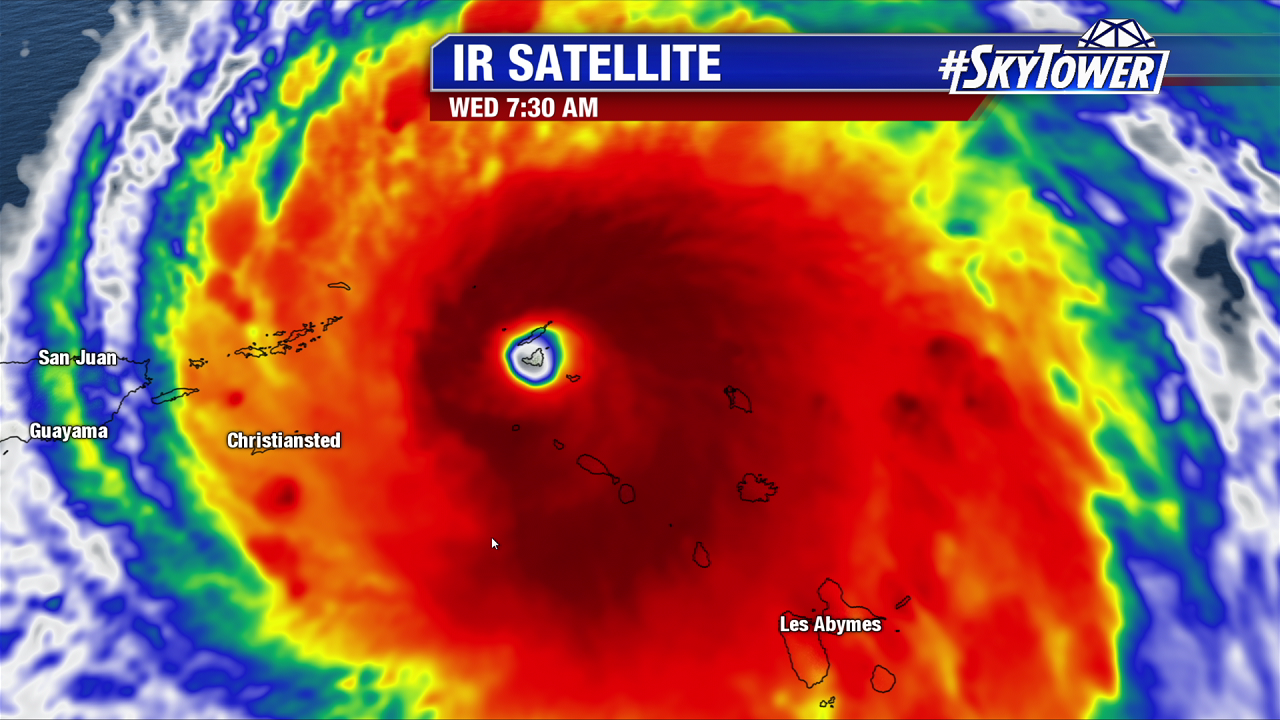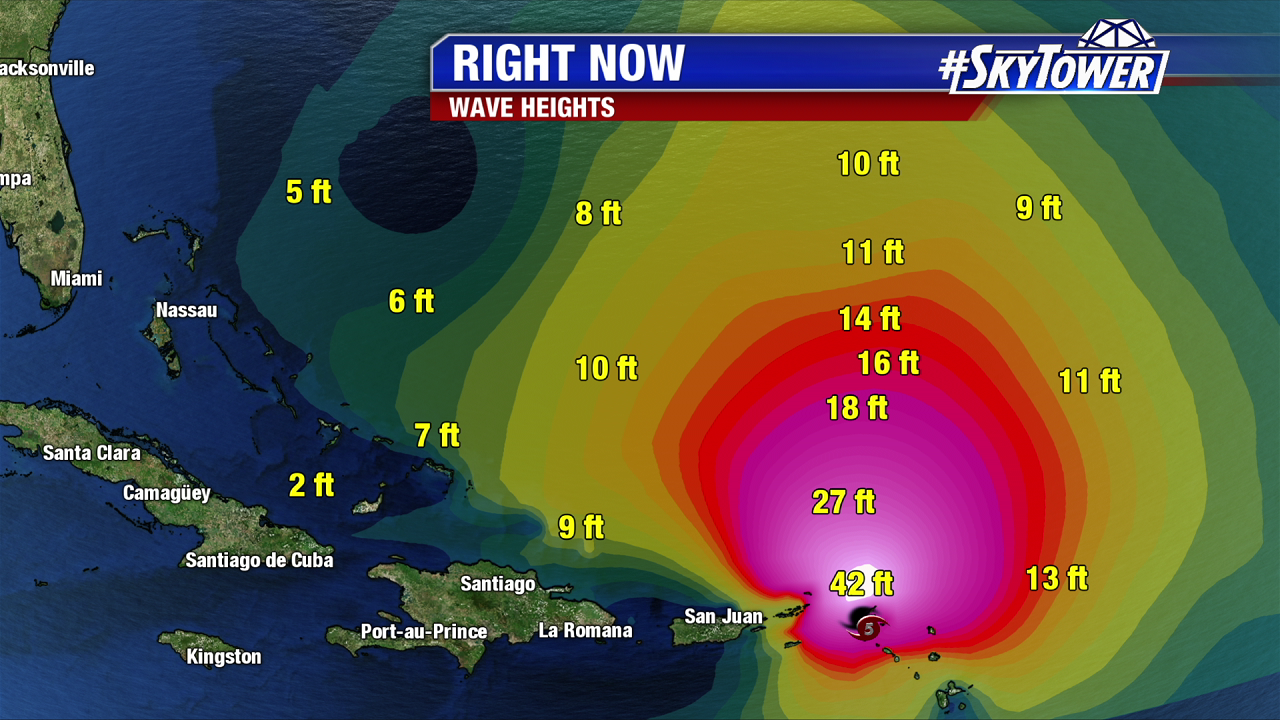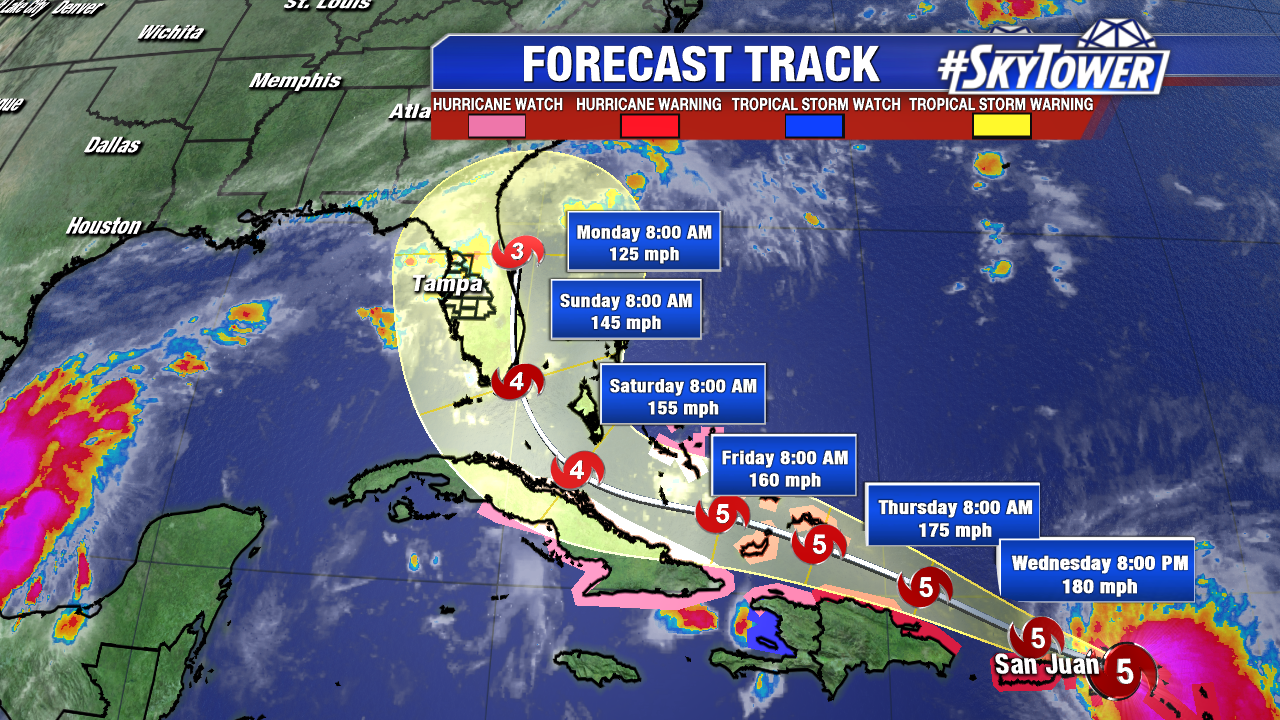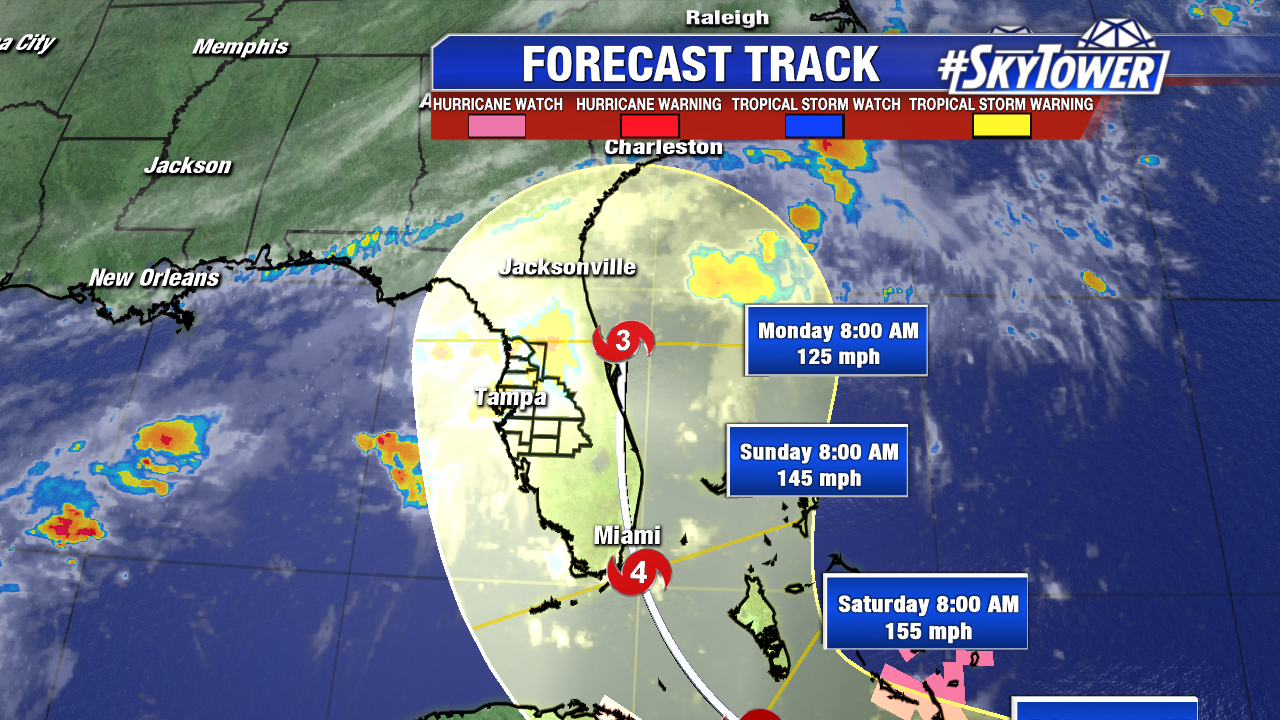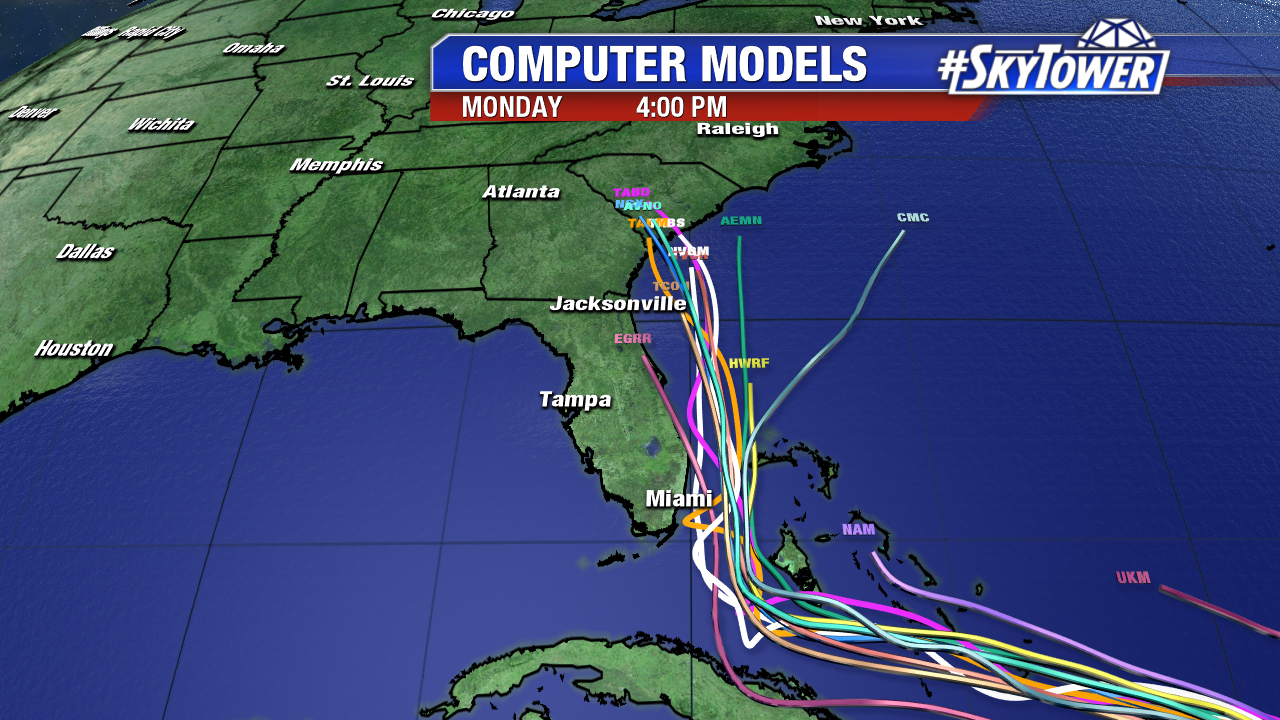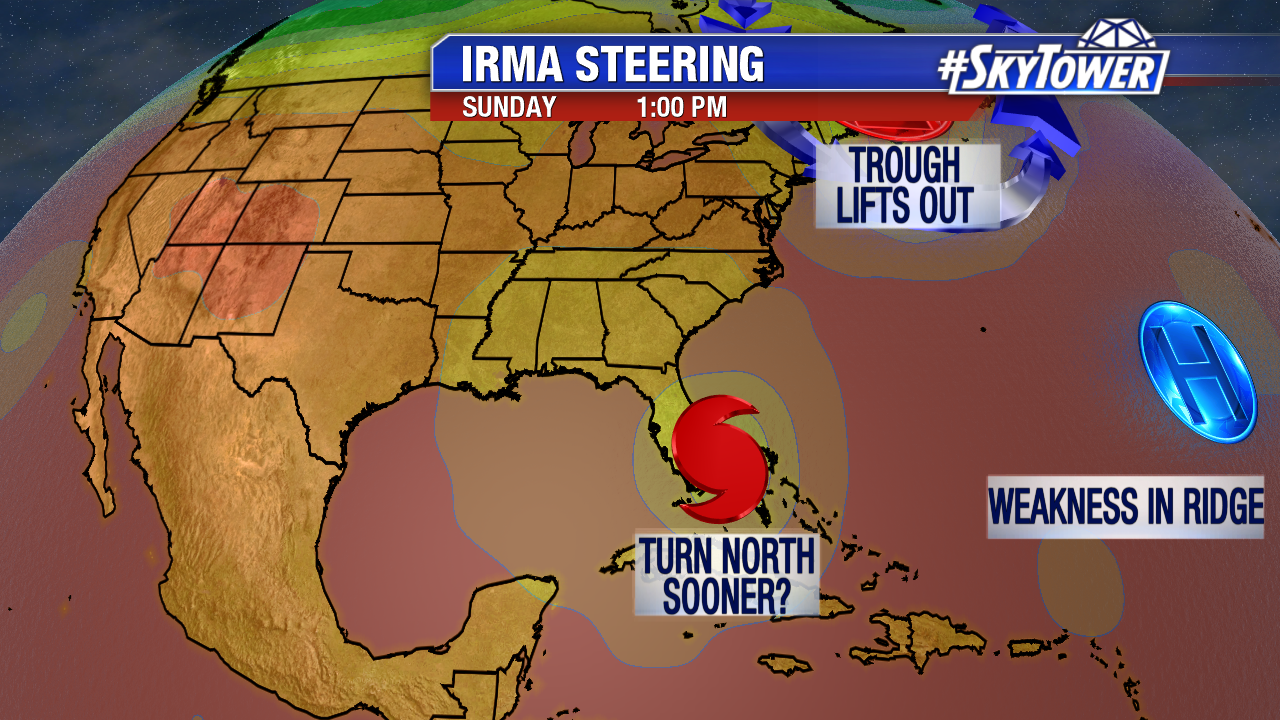Irma is a beast. After raking the Northern Leeward Islands it slams the British and U.S. Virgin Islands Wednesday afternoon. According to the NHC an unofficial gust of 111 mph was reported on Culebra. The massive category 5 hurricane passes near Puerto Rico early Wednesday evening. The core of hurricane force winds will just skirt the northern part of the island. As of 5 PM it maintains category 5 strength with 185 mph winds as it moves west-northwest at 15 mph. What’s incredible is Irma maintains 185 mph winds for 24 hours+. With the exception of Haiyan in the western Pacific, it is the only Atlantic and Pacific tropical cyclone to stay this strong for this long (according to Eric Blake of NOAA and Dr. Klotzback of Colorado State University). Wave heights build to 30-40 feet just north of the Virgin Islands Wednesday evening. Storm surge batters the eastern Caribbean with a peak surge of 7-11 feet over the Virgin Islands. Impressive waves plow through the Turks and Caicos and the Southeast Bahamas by Friday. A destructive surge of 15-20 feet is possible.
The only thing to really weaken Irma or disrupt it some would be interaction with Hispaniola or Cuba. Even then, the storm would likely still be a dangerous high end major hurricane before possible catastrophic impacts in south and east Florida Sunday and Monday. While the center line from the NHC a little further east at 5 PM, the track error 4 and 5 days out remains the same. 4 and 5 day error is 175 miles to 225 miles respectively. Beyond Florida, it is increasingly likely that coastal Georgia and South Carolina will see impacts too. Impacts are pending on when Irma makes the turn north. At this point, it will be on late Saturday. A slower turn north would mean more impacts a bit further west across the Sunshine State.
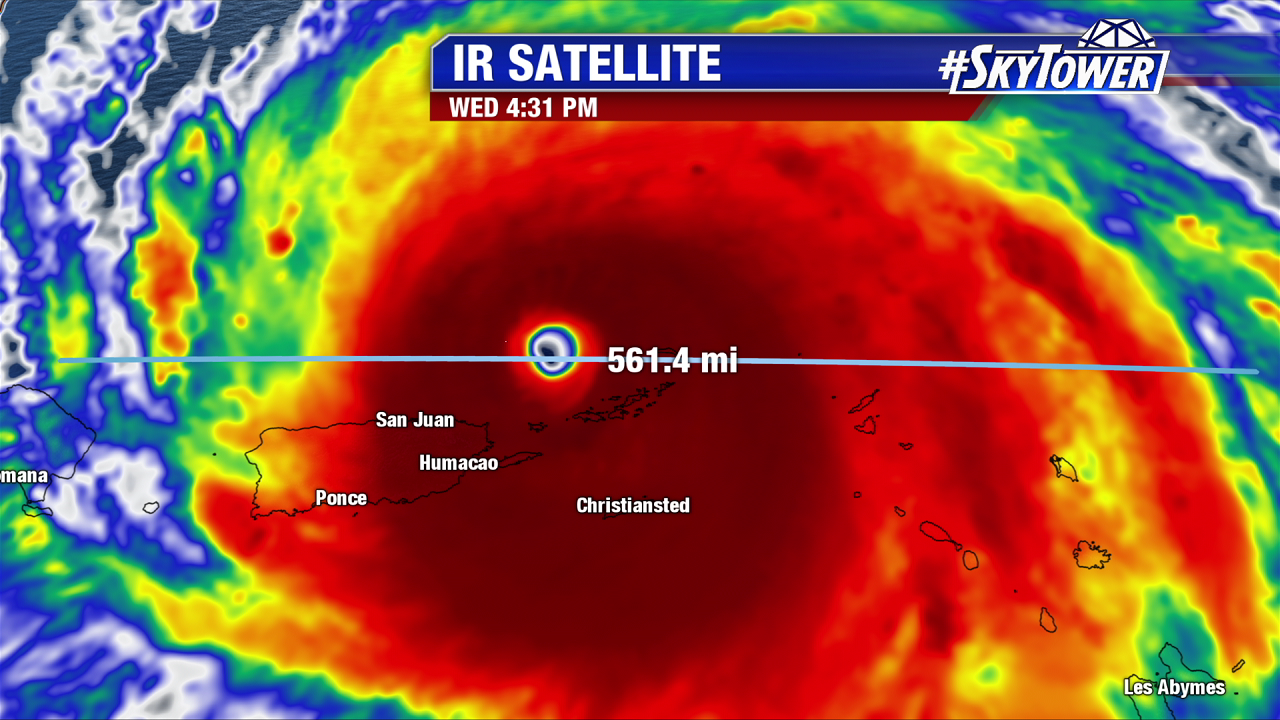
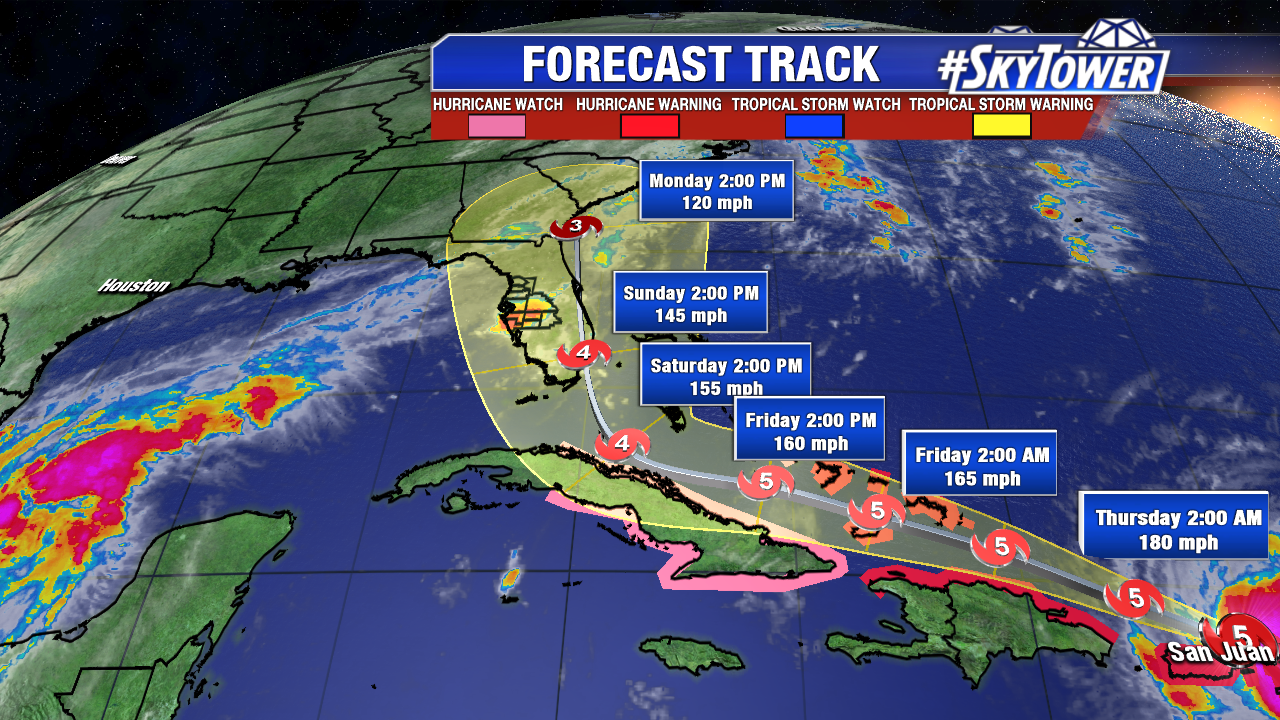
Here’s a glance at some of the model consistency Wednesday afternoon. Notice the cluster of models near southeast and east Florida. This track is northward towards southeast Georgia and South Carolina Monday afternoon. Both the GFS and especially the Euro bring the core of major hurricane force winds near or just over southeast Florida Sunday. A wobble west or east, would make all the difference in widespread destruction or tropical storm winds. Keep in mind as large is Irma is, the structure may not be as symmetrical this weekend. As of 5 PM hurricane force winds extend out 50 miles from the center. The strongest winds are in the surrounding eye wall. Tropical storm force winds extend out up to 185 miles from the center.
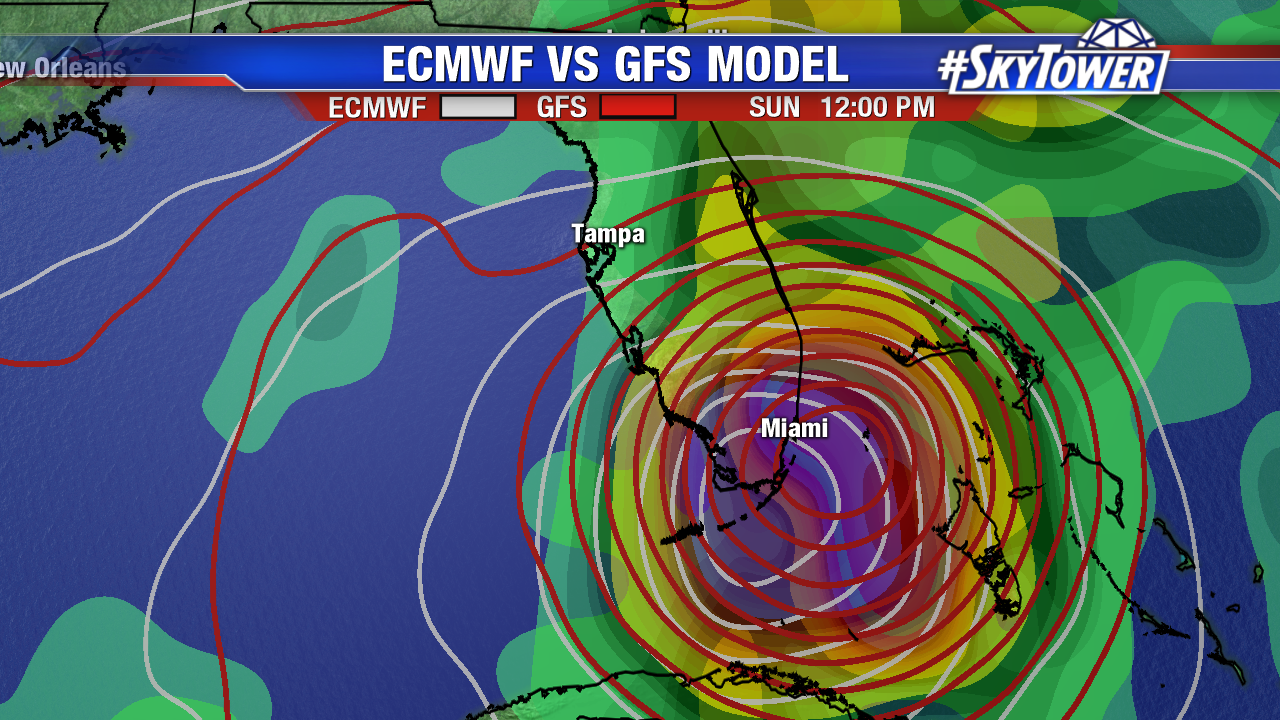
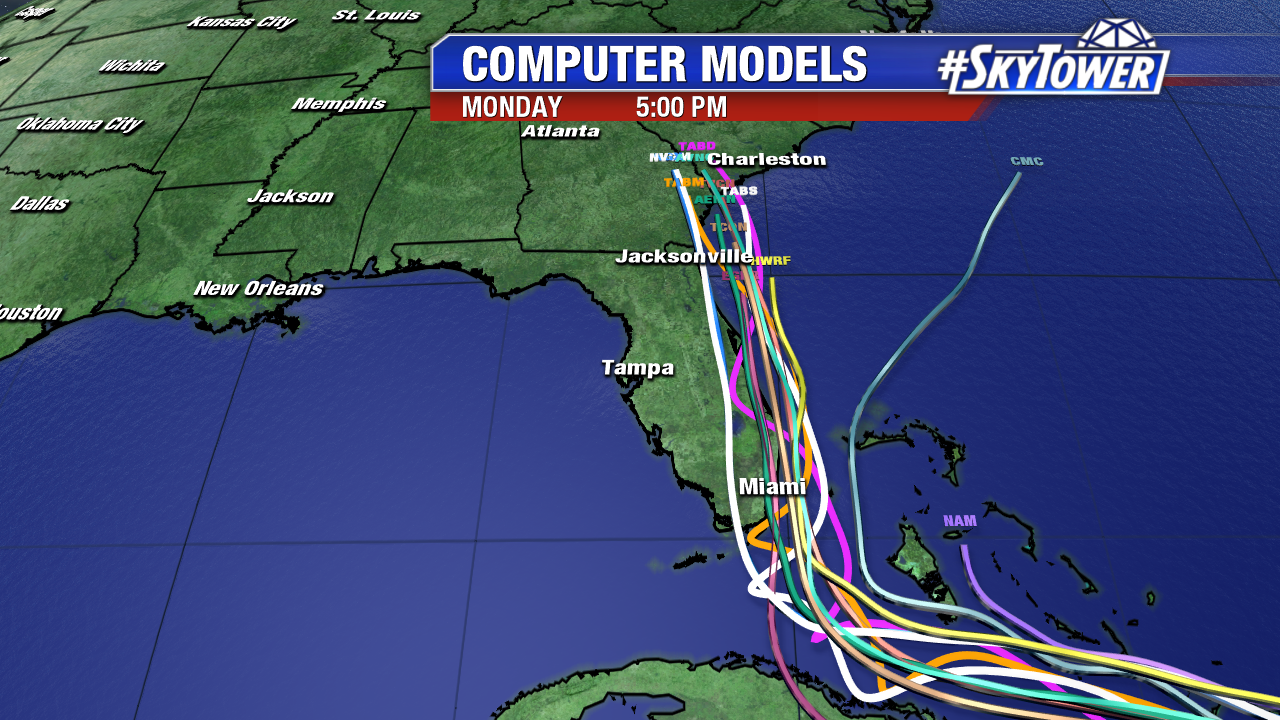
Ridiculous wave heights in the Caribbean move on to Florida by late this weekend. The worst surge, is highly dependent on the track. Here is an early wave height estimate in southeast Florida by Sunday afternoon from Wave Watch III model. Those shades of pink are 25-40 foot waves. Please heed any evacuations and warnings. Stay informed as we gain more model confidence in the days ahead.
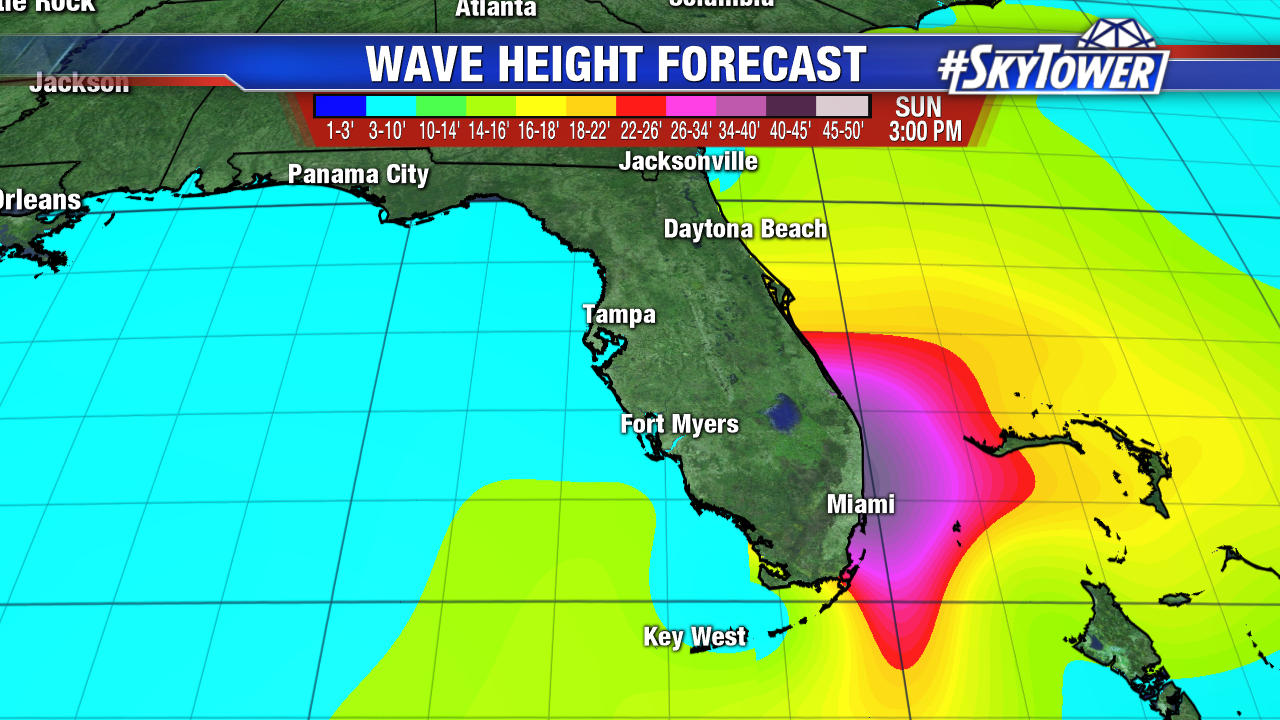
Also of note, both Jose in the east central Atlantic and Katia in the southern Gulf become a hurricane at 5 PM. Jose could clip the Leeward Islands, but should generally stay over the open Atlantic over the next 5-6 days+. Katia will run into mountainous east Mexico this weekend. It will stay well south of Texas.
